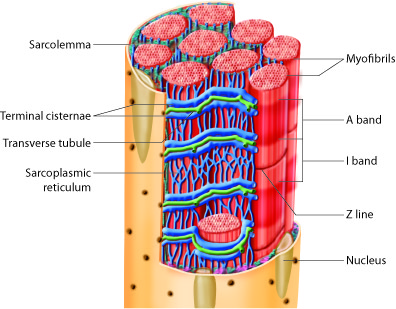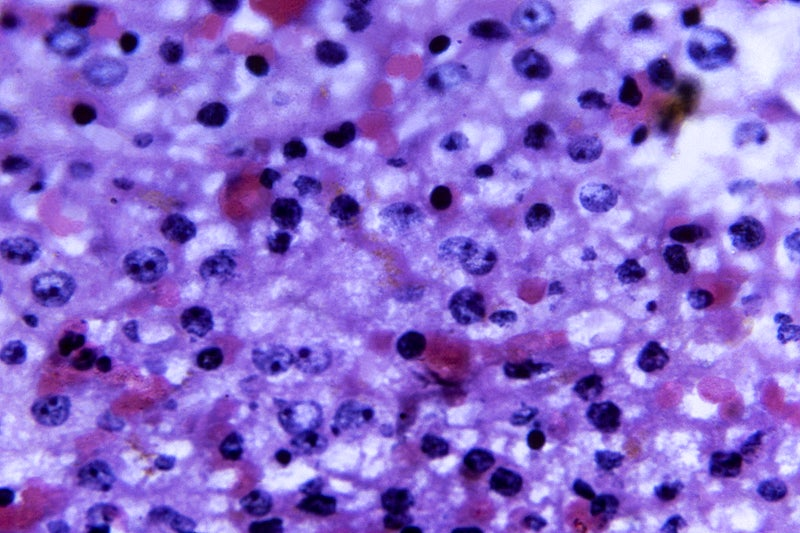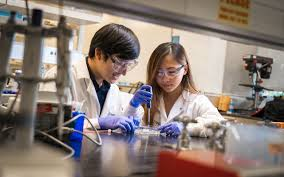The Role of Tissues in Human Health and Disease
Understanding the role of tissues in health is crucial because it allows us to comprehend how our bodies function under normal circumstances. For instance, epithelial tissue protects our body surfaces, connective tissue provides support, muscle tissue enables movement, and nervous tissue coordinates responses to changes in the environment.
On the other hand, understanding the role of tissues in disease is equally important. Many diseases are the result of tissue dysfunction. For example, cancer can be viewed as a disease of tissue growth regulation. In heart disease, both muscle and connective tissues are often involved. Neurological diseases like Alzheimer’s affect nervous tissue.
By studying tissues, scientists can understand the mechanisms of disease development and progression at a cellular level. This knowledge is vital for the development of new treatments and therapies. For instance, in cancer research, understanding how cancerous tissues grow and spread can lead to the development of more effective treatments.
Definition of Tissues: Tissues are groups of cells that have a similar structure and act together to perform a specific function. They are an integrated group of cells with a common structure and function.
Types of Tissues: In the human body, there are four primary types of tissues:
Epithelial tissue: composed of tightly packed cells, forms a protective barrier for our body. It covers all internal and external body surfaces and acts as a defense against various factors. This tissue plays a crucial role in preventing injuries, blocking the invasion of microbes, and reducing fluid loss. It’s fascinating how our body is designed to protect itself, isn’t it?
Connective Tissue: It is a tissue , which provide support and structure to the body. It includes several types of tissue, including adipose (fat), cartilage, bone, and blood vessels. Connective tissues bind organs together, hold organs in place, cushion them, and fill space.
Muscle Tissue: As the name suggests, this tissue is responsible for movements in our body. There are three types of muscle tissue: skeletal (attached to bones), smooth (found in walls of organs and structures such as the esophagus, stomach, intestines, bronchi, uterus, urethra, blood vessels), and cardiac (found only in the heart).
Nervous Tissue: This tissue is composed of neurons or nerve cells, which transmit electrical signals. It’s responsible for coordinating and controlling many body activities, it quickly sends signals across long distances and to specific cells.
Structure and Function of Each Tissue:
Epithelial Tissue: In terms of structure, epithelial tissue envelops the entire body surface. It consists of cells that are densely arranged and organized into one or more layers. This tissue is specifically designed to create a lining or covering for all internal and external surfaces of the body. Epithelial tissues function as the body’s guardians, managing permeability and facilitating the selective movement of substances across the body’s surfaces.
Connective Tissue: Connective tissues come in a vast variety of forms, yet they typically have in common three characteristic components: cells, large amounts of ground substance, and protein fibers. The amount and structure of each component vary from one connective tissue to another and determine the character of the tissue. The primary function of connective tissue is to provide support and to bind or connect tissues and organs together.
Muscle Tissue: Muscle tissue is distinguished by its features that enable motion. Muscle cells are reactive; they react to a stimulus. They possess contractility; they have the ability to contract and produce tension. They are stretchable; they can be elongated without causing harm to the tissue. Moreover, they are resilient; they can revert to their initial length after being stretched.
Nervous Tissue: Nervous tissue, located in the brain, spinal cord, and nerves, is tasked with the regulation and management of numerous bodily functions. It triggers muscle contractions, fosters consciousness of our surroundings, and significantly contributes to feelings, memory, and logical thinking. To accomplish these tasks, nervous tissue transmits signals from sensory receptors to the brain and spinal cord, and sends impulses back to various body parts.
Role of Different Tissues in Maintaining Human Health:
Epithelial Tissue: Epithelial tissue acts as a barrier against microorganisms, dust, and other small particles, preventing them from entering the body and causing harm. It also plays a crucial role in absorption (e.g., nutrients in your intestines) and excretion (e.g., waste products in your kidneys), helping to keep the body’s internal environment stable.
Connective Tissue: Connective tissue provides support and structure to the body’s organs and other tissues, maintaining the body’s physical integrity. It also stores energy (e.g., in the form of fat), insulates the body, and transports substances (e.g., blood, which is a connective tissue).
Muscle Tissue: Muscle tissue allows for movement, both within the body (e.g., pumping of the heart, movement of food through the digestive system) and movement of the body itself (e.g., walking, lifting). Regular exercise keeps muscle tissue healthy, which is important for maintaining overall health.
Nervous Tissue: Nervous tissue allows for communication between different parts of the body and responds to changes both inside and outside the body. A healthy nervous system allows for coordination, quick responses to changes, and maintenance of homeostasis.
How Healthy Tissues Contribute to the Overall Functioning of the Body:
Healthy tissues are essential for the overall functioning of the body. Each type of tissue performs specific functions that contribute to the body’s health and wellbeing.
- Epithelial tissue protects the body from external harm and plays a role in absorption and excretion, helping to maintain the body’s internal balance.
- Connective tissue provides structure and support, allowing other tissues and organs to function properly. It also plays a role in energy storage, insulation, and transport.
- Muscle tissue enables movement, allowing us to interact with our environment and enabling essential internal functions like heartbeats and digestion.
- Nervous tissue allows for communication and coordination, enabling us to respond to changes in our environment and maintain homeostasis.
Common Diseases Associated with Each Type of Tissue:
Epithelial Tissue: Diseases that commonly affect epithelial tissue include skin conditions like dermatitis, psoriasis, and eczema. Additionally, many forms of cancer originate in epithelial tissue, such as skin, lung, and breast cancers.
Connective Tissue: Connective tissue diseases are often autoimmune, meaning the body’s immune system mistakenly attacks its own tissues. Examples include rheumatoid arthritis, lupus, and scleroderma. Osteoporosis, a condition characterized by weak and brittle bones, is also a disease of the connective tissue.
Muscle Tissue: Diseases of the muscle tissue are often referred to as myopathies. These include muscular dystrophies, inflammatory myopathies, and conditions caused by metabolic defects.
Nervous Tissue: Diseases that affect nervous tissue include neurodegenerative diseases like Alzheimer’s and Parkinson’s, as well as conditions like epilepsy and stroke.
How These Diseases Affect the Tissue and the Overall Health of an Individual:
Diseases can affect tissues in various ways, often disrupting their normal function. For instance, in the case of epithelial tissue, skin conditions like dermatitis can cause inflammation and itching, while cancers can lead to uncontrolled cell growth and the formation of tumors.
In connective tissue diseases like rheumatoid arthritis, the tissue becomes inflamed, leading to pain and stiffness. In osteoporosis, the bone tissue becomes less dense, increasing the risk of fractures.
Muscle diseases often lead to weakness and wasting of the muscle tissue, affecting mobility and physical function. In nervous tissue diseases, the communication between neurons can be disrupted, leading to a wide range of symptoms depending on the part of the nervous system affected.
The overall health of an individual can be significantly impacted by these diseases. Besides the physical symptoms, they can also lead to psychological effects like stress and depression, and can interfere with the person’s daily activities and quality of life.
The Process of How a Healthy Tissue Turns into a Diseased One:
Disease development, also known as pathogenesis, involves several stages. It typically starts with an initial exposure to a disease-causing agent, which could be a microorganism like a bacterium or virus, a physical agent like radiation, or a chemical agent like a toxin.
Once the agent has entered the body, it can interact with the body’s tissues, causing damage. For instance, bacteria can produce toxins that damage tissues, while viruses can invade cells and use them to reproduce, causing cell death.
The body’s immune system responds to this damage, leading to inflammation and other immune responses. While these responses are intended to protect the body, they can also contribute to tissue damage and disease if they are too strong or if they target the body’s own tissues, as in autoimmune diseases.
Over time, the ongoing damage and repair process can lead to changes in the tissue, such as the development of scar tissue. In some cases, it can also lead to the development of abnormal cells, which can multiply and form a tumor, leading to cancer.
The Role of Genetic and Environmental Factors in Disease Development:
Both genetic and environmental factors play crucial roles in disease development.
Genetic Factors: Our genes, which we inherit from our parents, can influence our susceptibility to many diseases. Some diseases, like cystic fibrosis or Huntington’s disease, are caused by mutations in a single gene. Other diseases, like heart disease or diabetes, are influenced by variations in multiple genes. Genetic factors can also influence how a disease progresses and how a person responds to treatment.
Environmental Factors: These include a wide range of influences, from diet and lifestyle to exposure to toxins. For example, smoking is a well-known environmental risk factor for lung cancer, while sun exposure is a major risk factor for skin cancer. Infectious agents, like bacteria and viruses, are also part of the environment.
It’s important to note that genetic and environmental factors often interact in complex ways to influence disease development. For example, a person might inherit genes that make them susceptible to a disease, but whether they actually develop the disease might depend on environmental factors.
Current Methods for Diagnosing Tissue-Related Diseases:
Diagnosis of tissue-related diseases often involves a combination of methods:
Physical Examination: This is usually the first step, where the doctor checks the body for anything unusual.
Medical History: Understanding a patient’s health history can help identify any genetic predispositions or environmental exposures that may contribute to disease.
Laboratory Tests: Blood, urine, and other body fluids can be tested for signs of disease.
Imaging Tests: Techniques such as X-rays, CT scans, and MRI scans allow doctors to view the structures and organs inside your body.
Biopsy: This involves taking a small sample of tissue for examination under a microscope. Biopsies can identify diseases such as cancer and conditions like inflammation and infections.
Available Treatments and Their Effectiveness:
Treatment of tissue-related diseases depends on the specific disease, but some common approaches include:
Medication: Drugs can be used to kill disease-causing organisms, slow the progression of the disease, relieve symptoms, or reduce the body’s own immune response.
Surgery: Sometimes, diseased tissue needs to be removed surgically. This is often the case for conditions like cancer.
Radiation Therapy: High-energy particles or waves are used to destroy or damage disease-causing cells. This is often used in conjunction with surgery for diseases like cancer.
Physical Therapy: Exercises and other physical interventions can help manage symptoms and improve quality of life for diseases that affect muscles and other connective tissues.
Lifestyle Changes: In many cases, changes to diet, exercise, and other lifestyle factors can help manage disease symptoms and improve overall health.
The effectiveness of these treatments can vary widely depending on the specific disease, the individual patient’s characteristics, and other factors. Some treatments can effectively cure certain diseases, while others may only help manage symptoms. It’s also important to note that all treatments can have side effects, which need to be weighed against their potential benefits.
Recent Advances in Tissue Research:
- Tissue Engineering: Scientists are making new materials that can replace parts of our body or help new tissues grow.
- Biosensors in Tissue Engineering: Scientists are using special sensors to understand how cells behave when they are growing new tissues.
- Soft Biological Tissue Manipulating Technologies: Researchers are finding new ways to handle and manipulate soft tissues during surgery.
Future Developments and Their Impact on Health:
- In Situ Tissue Engineering: In the future, we might be able to heal and regrow tissues inside our body. This could mean we won’t need organ transplants anymore.
- Personalized Medicine: Scientists are working on ways to test drugs on lab-grown tissues that match a patient’s own cells. This could help doctors choose the best treatment for each person.
- Regenerative Immunotherapies: Some researchers are trying to train our immune system to accept new tissues and organs, and to help rebuild tissues.
In conclusion, the study of tissues, their functions, and their roles in disease is a fundamental aspect of biology and medicine. Understanding how tissues function in health and how they are affected by disease can help us diagnose and treat a wide range of medical conditions. Recent advances in tissue research have led to exciting new approaches to treatment, such as tissue engineering and regenerative medicine. Looking forward, ongoing research in this field holds great promise for the development of even more effective treatments for tissue-related diseases. The future of tissue research is likely to have profound implications for human health, potentially leading to breakthroughs in our ability to repair and regenerate damaged tissues.








